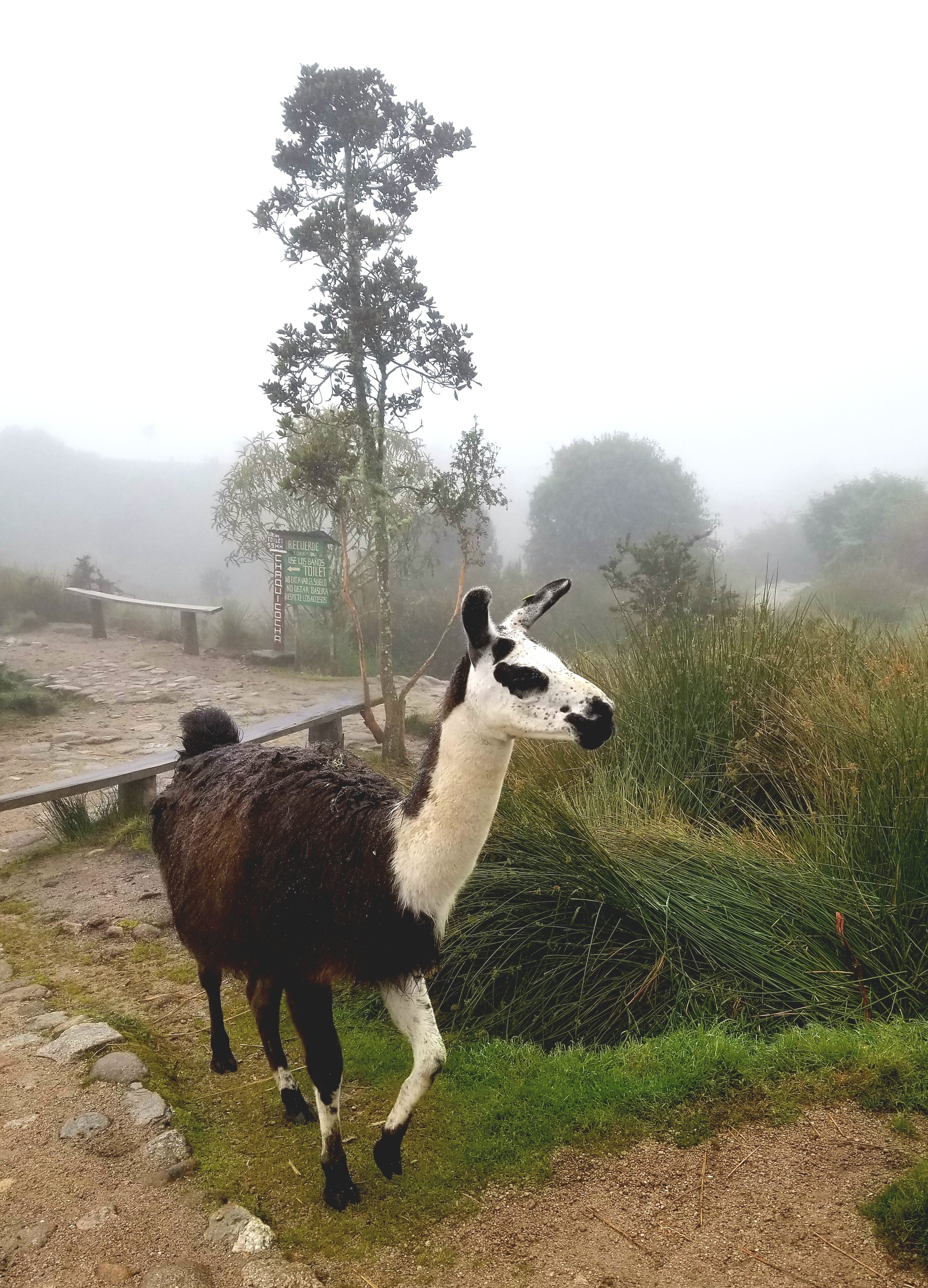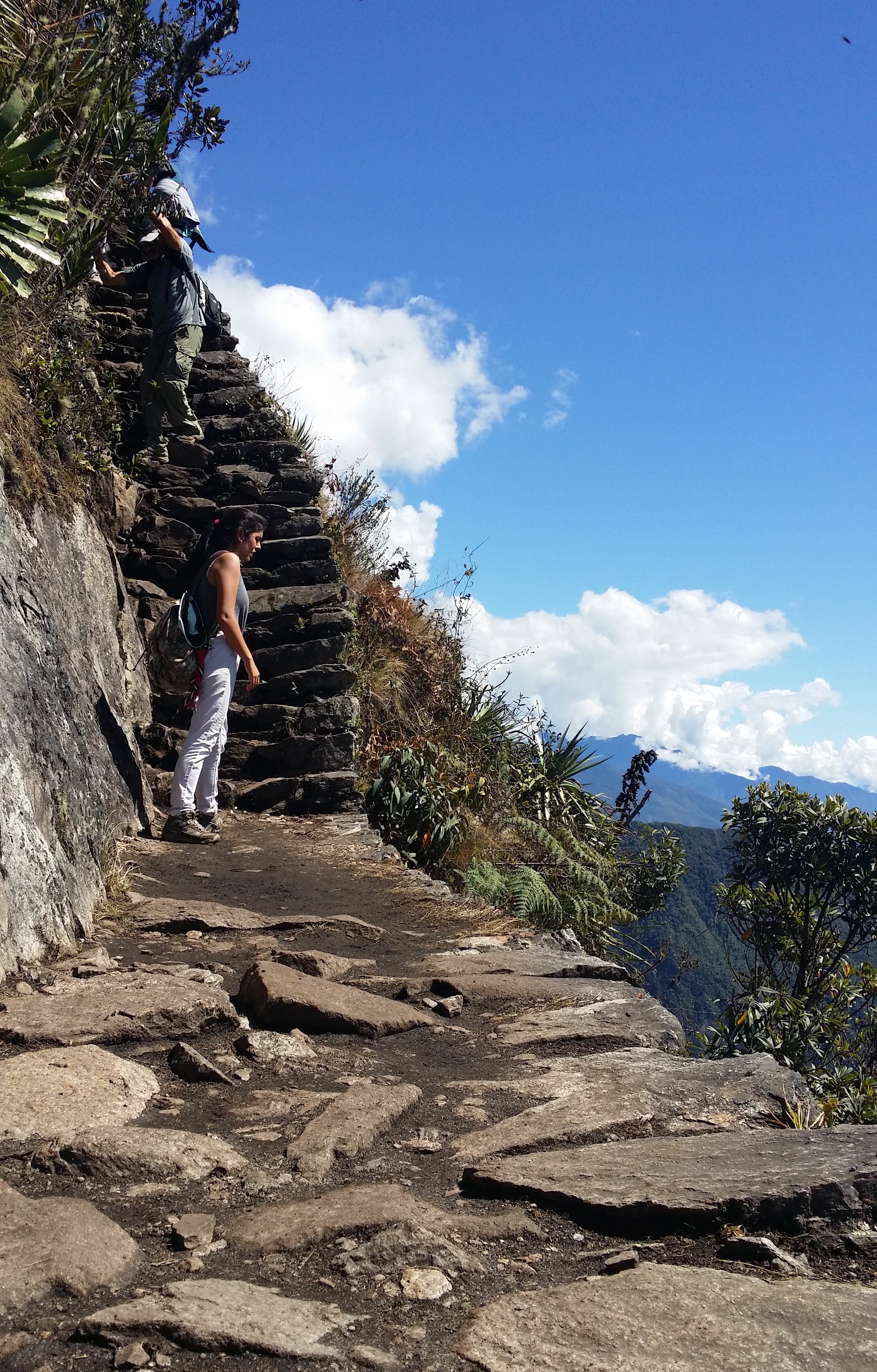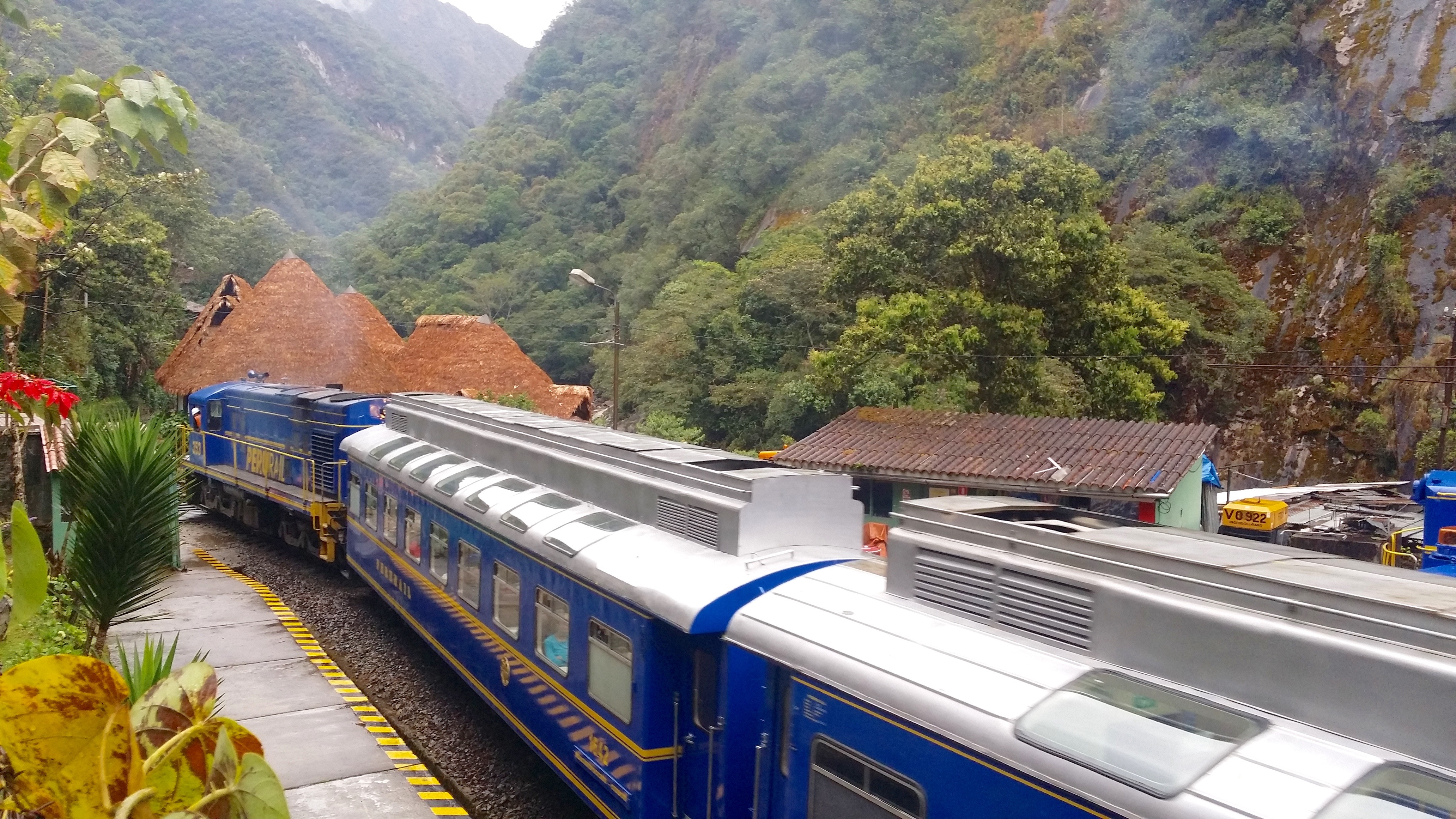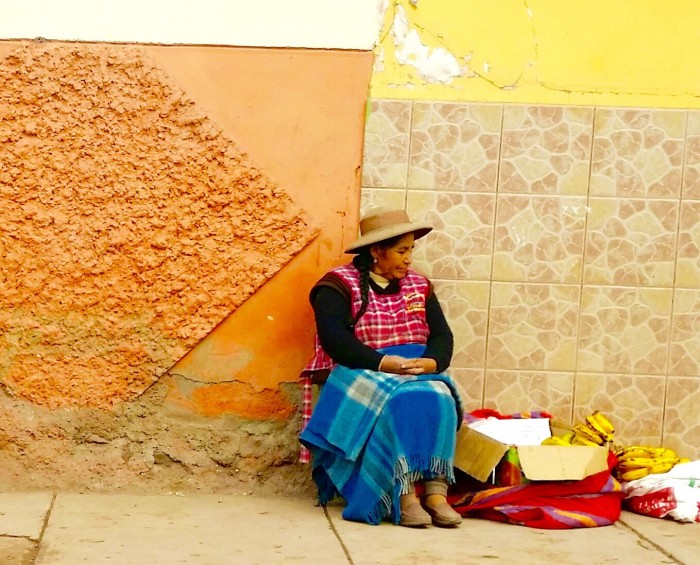The Gringo Killer
Dead Woman’s Pass on Day 2 of the Inca Trail had been extreme. I had suffered altitude sickness near the summit at 14,000 feet, so to sleep that night at the ‘lower’ elevation of 11,000 feet was such a relief.
I had been unable to eat either lunch or dinner, which bizarrely, had been served within an hour of each other after we had arrived into camp. Our guide, Margot, was instead plying me with coca tea, to ward off further sickness. All I really wanted to do was to rest and recover. Sleep would come, but like everything else on the Inca Trail, it would come on the mountain’s terms.
A huge thunderstorm erupted shortly after we climbed into our tents, unleashing torrents of rain which pelted the flysheet. Shaun tossed and turned on his yellow inflatable mattress; each small movement causing a series of plasticy squeaks. Between the cracks of lightening, thunder, torrential rain, the squeaks, and eventually the snores, it was difficult to fall asleep. A little meditation finally nudged me off towards dreamland.

Clouds lingering on the morning of day 3 on the Inca Trail.
Day 3 on the Inca Trail dawned in much the same way as the previous day. The rain had stopped, but a thick blanket of cloud hung over camp. My appetite had returned with vigor, so I devoured all that was set in front of me at breakfast. Thirty minutes later, we were once again setting out on the trail. It came as very little surprise that our trajectory was upwards.

A misty start to day 3 on the Inca Trail.
Narrow stone steps once again snaked uphill, flanked on one side by the Andean grass of the mountainside, and on the other by huge vertical drop-offs. Down in the depths of the valley, the overnight cloud was lingering. But as the temperature rose, a strange phenomenon began to unfold. Rivers of cloud began flowing upwards out of the valleys, clinging to the mountainside as they rose up and over the trail in a display of misty mysticism.
While pausing in search of breath, I turned to look back out over the rising clouds and the trail. Far in the distance, Dead Woman’s Pass hauntingly reemerged from the clouds. It was surreal to think that I had hiked over such a monstrosity just a day beforehand. When I turned to resume climbing, I saw that Margot had stopped up ahead, and had our group gathered around her. We had reached Runkurakay; the first of several Inca ruins we would encounter on day three.
Runkurakay was used in Incan times in much the same way that we used it in 2018, albeit without the roof. The small circular structure which overlooked the valley far below (or in our case the shifting clouds), provided sanctuary for those hiking the Inca Trail. Margot gave an in-depth lecture on the ruins, but I was distracted. I slipped off to the periphery of the group, where I could find a little space to breathe.

Runkurakay Ruins nestled into the hillside.
With altitude sickness still on my mind, I now looked up with some trepidation toward Runkurakay Pass; the latest mountain of the Urubamba range to stand in our way. Although Runkurakay is around 850 feet lower than Dead Woman’s Pass, the 13,123 feet summit is still cause for concern to a hiker with altitude sickness. But when I did my little self-check, I was pleasantly surprised to discover that I felt reasonably well.
With the history lesson complete, and my mindful moment giving me newfound confidence, we once again set off on the never-ending stone steps of the Inca Trail. We hiked up and around two little lakes, which looked pretty but wafted of rotting vegetation and stale water. With each step now, I was mindful to focus on that particular moment, and to become consciously aware of all the sensory inputs. I cast all other thoughts off to oblivion with the rising clouds. In time the stone staircase flattened back to trail. Without much noticeable effort, I had reached the summit of Runkurakay, where all of the rising cloud now seemed to have gathered. Visibility was at less that twenty feet, adding a heavenly feel to the mountain top.

Pretty lakes – but also pretty stinky!
The group paused on the summit to snack, talk and reorganize our packs. Margot then broke the uplifting news that we had scaled the last major climb of the entire trail. This perked us all up no end. The descent, while initially very steep, was ultimately more gradual and less demanding than Dead Woman’s Pass. As the trail narrowed and sheer drops opened up to our right hand side, we filtered into single file. I was in a trio with Davide and Andreh, to whom who I had given one of my hiking poles. This gifting served a dual purpose. Andreh really appreciated the pole on the descent and I was happy to have only one pole for myself. Hiking with both poles had been counter-intuitive I learned. With no free hands, I had to stop every time I wanted to take my camera out of my pocket or to have a drink or snack.
We discussed soccer. Davide was an avid Hoffenheim supporter. Andreh enjoyed the watching English Premier League without partisanship. And I of course shared my love for Tottenham. We chatted for around a mile, until it occurred to me that I had more energy than I was using. Furthermore, talking in single file too often involved turning around to face the other guys. So, not wanting to waste my new found energy, I broke away from the conversation and steamed ahead on the trail. Pretty soon I had overtaken Tanya and was then hiking behind Shaun.
After several miles of enjoyable hiking, we came to a fork; one set of steps led upwards into the clouds, the other dropped off into jungle. Neither Shaun nor I knew which path to take, so we sat on the steps and waited for the others. It transpired (from the knowledgeable Margot of course) that the upper trail was the entrance to another Inca ruins. Given the option of exploring or continuing, we all opted to see the ruins. So we proceeded to clamber up 98 very steep and slippery steps.

Sayacmarca Ruins. Not very photogenic in the mist.
Arriving at Sayacmarca on the Inca Trail is like rising up through the floors of the world, crawling into the attic space, and then climbing out through a skylight to sit on the ridge tiles. It felt as if we had reached the roof of South America itself. The tightly clustered buildings huddled together on a rocky outcrop, bordered on all sides by sheer drops and offered a panoramic view out over the entire Urubamba range. Shaun and I had been resting just yards away from the foundations of this archeological marvel, but had no idea what lay above the mists. I wondered if this served as a metaphor for how many experiences in life we are so close to enjoying, but cannot see due to the foggy thinking.
After descended the steps onto the trail once again, I was the first to set out on the trail. For two days I had lagged behind the others, mostly due to sickness. But now I felt completely reinvigorated, and had developed an unquenchable thirst for exploring on what was an increasingly interesting hike.

The further into day 3 I hiked, the more the landscaped turned to tropical cloud forest.
Sayacmarca had been strategically placed. It is perhaps the point where one Peru meets another; a frontier which experts think may have inspired the Inca’s to build Machu Picchu where they did. As I carefully hiked on the narrow trail which now seemed to traverse a jagged and exposed mountain ridge, I noticed that the surroundings were changing dramatically. The barren windswept and sun-dried mountainsides of Warmiwañusca were now but a distant memory, as the evergreen fauna of the tropical cloud forest now predominated. As I edged ever closer to Machu Picchu, I was crossing the frontier between Peru’s arid upland and it’s more exotic Amazonian jungle. Some say Machu Picchu was to be used as an outpost for the Cusco-based Inca’s to venture into and conquer the Amazon.
Alas, the spread of the Inca Empire would be halted not by the lush vegetation and tropical species of the Amazon, but by the arrival of Europeans on South America’s north eastern shores. Who knows, if the Inca’s had spanned the Andes into the Amazon basin and beyond, the native people of South America may well have united, and been able to resist the European invasion. All such theories are now but mysteries of conjecture, left for the guides of Machu Picchu to unravel.

Feeling good, and enjoying day 3 on the Inca Trail.
Staying true to it’s climatic classification, the trail now edged through a thick cloud, which became increasingly menacing the further I ventured. I could tell that on either side now, great drops of thousands of feet lay in wait for any errant footstep. But the full repercussions of any theoretical falls remained concealed beneath the clouds. It was now also incredibly quiet; the thick moist air dampening the sounds of nature. After hiking solo for around a mile, the moisture in the air turned to rain, slowing my progress as the stones had become even more slippery. And then a sudden noise stopped me in my sodden tracks. I knew instantly what it was, but it was what it meant that startled me. The beacon was from the trains which run between Ollantaytambo and Agaus Calientes, the base town for Machu Picchu. I looked out over the edge of the trail in the hopes of seeing Machu Picchu, but it was hopelessly lost in the clouds. But I now knew we were close. Somewhere, below those clouds, was the lost city of the Inca’s. While contemplating this geographic revelation, I sat on a rock to wait for the others. Had I hiked for two minutes more, I would have been waiting for them in the shelter of camp. But I wasn’t to know.

The trail was now going through tropical cloud forest.
Lunch on that third day was a real treat. The heaviest rain fell while we were under the cover of the dining tent, sampling all manner of local energy-producing foods. After reemerging to drizzle, we watched several llama’s wander through camp, and then struggled to put on our rain ponchos. Tanya and Davide had the strangest technique. Davide, not wanting to wear his poncho, but needing shelter from the drizzle until we were ready to set off, took cover under Tanya’s poncho. The pair of them looked like a German-Swiss pantomime costume that was putting the cart before the horse.

Tanya and Davide performing their Swiss-German back-to-front pantomime horse trick

One of several llama to wander through our lunch camp!
While setting off again, I spoke with Andreh, and told him about how magical Machu Picchu was going to be. I shared with him the memory of the day, three years previously when I had climbed Machu Picchu with Yesi, then got on one knee and proposed when we had returned to the ruins. Andreh had a smirk on his face throughout my recollection of the event.
“Actually”, he said with his Australian twang, “I’m going to ask Carolina’s father for his blessing to marry his daughter once we get back to Lima.”

Carolina and Andreh.
This of course gave Andreh and I much to discuss, as we were both from other continents and proposing to Peruvian ladies in their homeland. Andreh shared the words he had planned for his future father-in-law, and I have to say, I rated his chances of a positive response at almost perfect. With Andreh and I chit-chatting about proposals, an hour passed on the trail. We remained blanketed in cloud through this time, hugging the jagged mountain ridge. Then, the trail literally plunged into a black hole.
“This can’t be the trail can it?”, I asked as I ventured into the unknown.
It was the Inca Tunnel, yet another marvel of ancient engineering. We slithered down into a dark passageway, which cut right through the rock, before reemerging about 25 yards further ahead. The gradient and jaggedness of the ridge had become so extreme that there was no other way of continuing the trail other than to cut through the mountain. Those Inca’s certainly were determined, ingenious and resourceful.
And then, as Andreh and I discussed how difficult it must have been to cut through rock all of six hundred years ago, quite suddenly, we arrived at probably the most spectacular view either of us had ever seen. We arrived on a bald rocky mountain top just as the heavy cloud was moving off, revealing a magnificent view of the Urubamba peaks, most of them clad in snow. Cloud lingered in the valleys, but the mountain peak panorama was breath-taking.

Ruins and beautiful views on day 3 of the Inca Trail.

View from the Inca Trail on day 3.

My phone pictures just don’t do the panoramas the justice they deserve.
Something else caught my eye. A cell phone tower! I took out my phone, called Yesi, and was delighted to hear the ringtone in New York. I had not had coverage for almost 50 hours, and I knew she would be worried. With Yesi pacified, I then called my mother in Ireland. And finally, I was able to see that Christian Eriksen had just scored a last-minute goal as Tottenham kept up their title push. An altogether productive and satisfying few minutes. But then, after taking some pictures and videos, I put my phone away and consciously breathed in the fresh mountain air as I savored the spectacular views. I really am a lucky man to have seen these wonders.
Shaun, who was disinterested in scenery throughout, had already set off on the final section of the trail. It was a decision he would later regret. As the clouds continued to roll back, revealing yet more wondrous views, Margot, Carolina, Andreh and I remained on the mountain top.

One of the many ruins on day 3 of the Inca Trail.
Once we started hiking onwards, we discovered that very quickly, the trail suddenly fell away down the mountainside in a series of spiraling steps. Vertigo raised it’s head, and I had a job keeping him at bay. A more tangible problem was the strain these incredibly steep steps were putting on the knees and hips.
“Meet the Gringo Killer”, Margot said with a sly grin. “Two more hours of steps.”
Carolina immediately struggled with the downward staircase. Myself and Adreh were not fairing much better. The couple and I had by now become good friends, and even if I had been able to descend faster, I would have stayed with Andreh to help and support Carolina. Flight after flight of sharply falling steps came into view below our feet. Thankfully, the lush vegetation which now included beautifully colored orchids, distracted us while we stopped to rest. At one particular spot, where the trail fell deeply around to the right, I made the mistake of looking into the drop. The closest relatively flat terrain was an estimated three thousand feet beneath us. It was enough to take a man’s breath away – if he had any breath!
As treacherous as the Gringo Killer steps were, the experience was quite enjoyable. We were literally descending into the jungle, on the last leg of our adventure on the Inca Trail. Day 4 promised to be a short day, when we would hike a short distance to the Sun Gate overlooking Machu Picchu. But day three wasn’t done with it’s revelations just yet. An hour into the Gringo Killer, the trail leveled out to cross one of the dozens of terraces on Into Pata (Sunny Slope); an Inca ruin of gigantic proportions, which cascaded down the steep mountainside. From the terrace we could once again pick out the Urubamba River, and the trains puffing alongside it as they hauled the less adventurous Machu Picchu explorers to and from the ancient city. Again, the views were spectacular.

Groups hiking the Inca Trail normally pose here for a group photo. But most of our group had already hiked ahead!

Andreh admiring the mountain scenery.
The last ruin we encountered that day was Wiñay Wayna. When Margot translated the Quechua name as ‘Forever Young’ I was delighted with it’s symbolism. Arrival at this complex settlement from the Inca days heralded the end of the third day – a hike of 24km through the Andes on difficult terrain. Reaching the end of the day was effectively completing the most challenging sections of the Inca Trail. As the oldest member of our group, the satisfaction brought by treading through Wiñay Wayna was immense. The difference with this ruin was that we had to like down through the terraces to get to our overnight camp. I led the way on what was without doubt the longest flight of steeps I have ever descended.

So many ruins on day 3 of the Inca Trail.

The final ruins of the day. It may not look it, but the steps down through those terraces were very long and very steep!
At the bottom, we regrouped and rested, before hiking through one final section of jungle and arriving into camp. We were greeted by Shaun, who was in an even more neurotically cranky mood than usual. His mission to get to camp quickly had worked. In fact, it had worked so well that he had arrived before camp had been set up, and had to stand waiting in the rain for our tent to be erected. He was wet, cold and hungry. Somehow, I was the brunt of his displeasure.
“Well,” he blurted out, “as long as you got to talk to your wife and mother that totally helps me to dry my clothes!”
It was bizarre. My phone calls had little to do with his plight. Had he remained with us longer on the mountain top, not only could he have got to experience the best of the views when the clouds had rolled back, but he would also have arrived into a dry camp. There was little point in trying to explain this to him.
Shaun stomped around camp, muttering to himself, throwing dirty glances at the rest of the group, and generally being a disruption to what had been a wonderful day. For a moment I wanted to slap, and tell him to grow up. Then I glanced over towards Davide and Tanya, who had also hiked ahead to camp, and who were also wet and cold. But they were still smiling. In that moment, I realized the futility of allowing Shaun’s neuroticism to affect my own mood. Wherever we go, whether it be on the subway at Times Square, on a flight, at the movies or even to the top of the Andes, there will always be people like Shaun. I took a breath and made a conscious effort to ignore him, and to concentrate on enjoying the remainder of my Inca Trail experience.

Our excellent guide Margot – guide, medic, motivator and even peacekeeper!
With Shauns tantrum continuing and threatening to cast a thorny atmosphere over dinner, Margot stepped in to nullify the situation. In time, Shaun saw the error of his own ways, and so we all sat down to enjoy our meal with unity restored. As this was our last meal together, we chipped in money to a kitty to be presented to the porters as a tip to show our gratitude for their efforts. Those men are the heroes of the mountain; carrying tents, chairs, tables and cooking equipment on their backs for hours on end. Sometimes their burden weighs up to fifty pounds, but they charge ahead without complaining.
When dinner had ended, the porters introduced themselves one by one, thanking us for our generous tips. It was a nice way to round of the day, even though we all agreed that we felt a tinge of guilt. Our relatively small offering (by 1st world standards) of $50 each had meant so much to these local men and their families. We all speculated how much of the price we had paid to hike the Inca Trail would filter down to these men as wages. It seemed as though the tips constituted the majority of their income. I wished I had been able to give more.
After dinner, we quickly headed off to bed. Day 4, our final day on the Inca Trail, would begin with a 3am alarm call. But what a day it promised to be! We would complete the trail by hiking to the Sun Gate for a dawn entry, and then enter the lost city of Machu Picchu.
































































